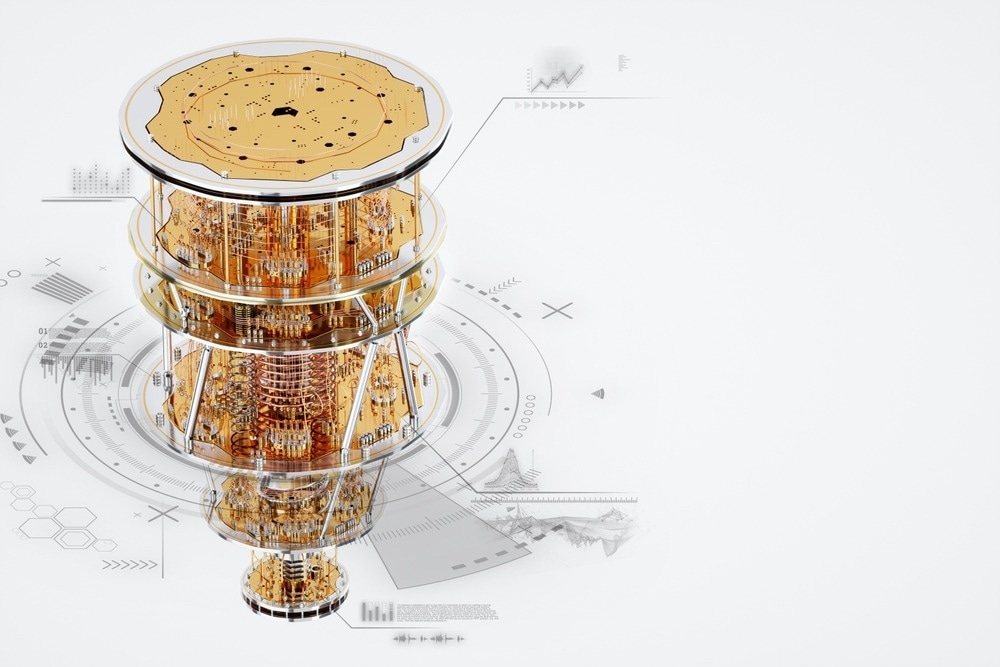A groundbreaking study has illuminated the persistent challenge of scalability in the realm of quantum computing, particularly in regard to control-signal delivery. Researchers M. Malinowski, D.T.C. Allcock, and C.J. Ballance present their innovative solution in a new study published in the journal PRX Quantum.

Image Credit: Marko Aliaksandr/Shutterstock.com
Small-scale quantum computers traditionally connect individual qubits to external signal sources, a method that grapples with limitations stemming from the inherent input/output (I/O) restrictions of qubit chips. To overcome these challenges, the study introduces the "WISE" architecture (Wiring using Integrated Switching Electronics), a novel approach poised to unlock new horizons in quantum computing and its commercial applications.
The Challenge of Scaling Quantum Computers
The study in question focuses on the critical challenge of scalability. Small-scale quantum systems grapple with connecting each qubit to external signal sources, encountering limitations caused by the qubit chip's I/O constraints. The new research shows that overcoming this requires the integration of control electronics into the qubit-chip assembly, a complex endeavor accompanied by stringent operational constraints and performance considerations. This challenge, aptly referred to as the "wiring challenge," is a significant obstacle to the advancement of quantum computing.
Trapped-Ion Quantum Computing and the WISE Architecture
The researchers present a solution in the context of trapped-ion quantum computing, an area particularly promising within the intermediate-scale quantum (NISQ) era. This approach stands out due to its unique ion transport capabilities, which facilitate qubit reconfiguration, enabling agile qubit routing without resorting to error-prone multi-qubit gates. Moreover, it empowers transport-assisted gates, granting local control over quantum operations, particularly the Rabi frequency. This holds true for diverse qubit drives, encompassing laser and microwave technologies, provided they exhibit spatial inhomogeneity, as substantiated by prior experiments.
Feasibility and Implications of WISE in Quantum Computing
The study examines the feasibility and implications of the WISE architecture within the quantum computing landscape. WISE introduces a transformative approach by integrating straightforward switching electronics directly into the ion-trap chip, meticulously aligned with the fabrication and operational prerequisites of the chip while preserving its high-performance standards. The pivotal distinction lies in segregating intricate, high-footprint, high-power electronics from the chip, ensuring that it can wield extensive control capabilities without compromising quantum performance.
The implications of the WISE architecture are nothing short of profound. The study outlines how WISE can empower a fully connected 1000-qubit trapped-ion quantum computer using around 200 signal sources. This breakthrough demonstrates the feasibility of scaling up trapped-ion quantum computers, a prospect that was previously encumbered by the "wiring challenge."
Conclusion
The study represents a pioneering step in the world of quantum computing, offering a viable solution to the longstanding challenge of scalability and control-signal delivery. The research extends beyond the realms of academic research, acting as a potential catalyst for the commercial and industrial application of quantum computing. The implications of WISE reverberate across sectors that rely heavily on data-driven decision-making, promising to revolutionize industries such as finance, logistics, materials science, and cryptography.
Source:
Malinowski, M., Allcock, D.T.C. and Ballance, C.J. (2023) How to wire a 1000-qubit trapped-ion quantum computer, PRX Quantum. Available at: https://journals.aps.org/prxquantum/abstract/10.1103/PRXQuantum.4.040313 (Accessed: 23 October 2023).